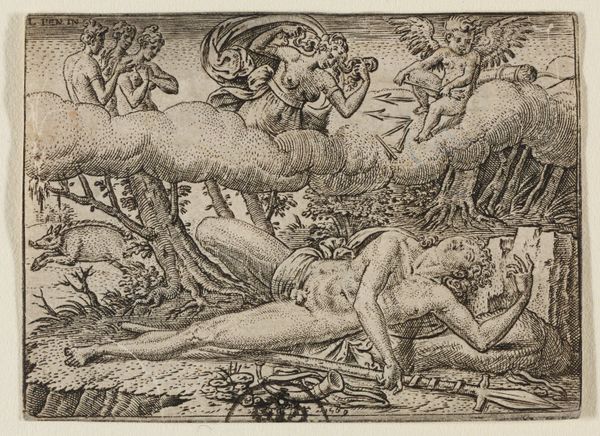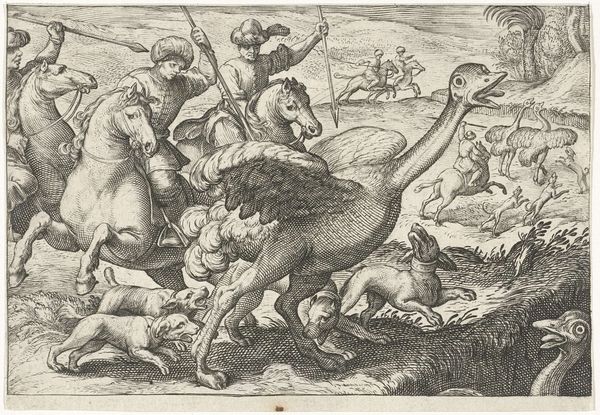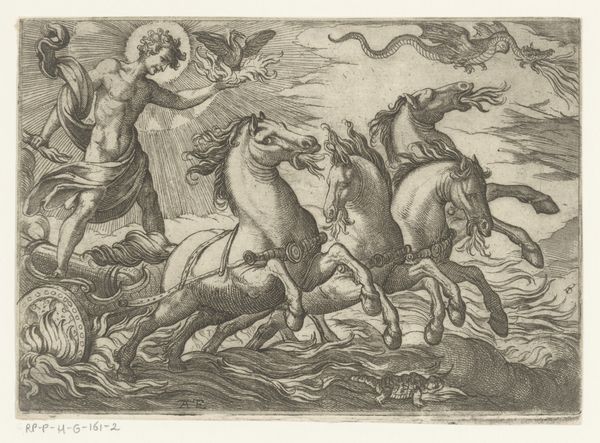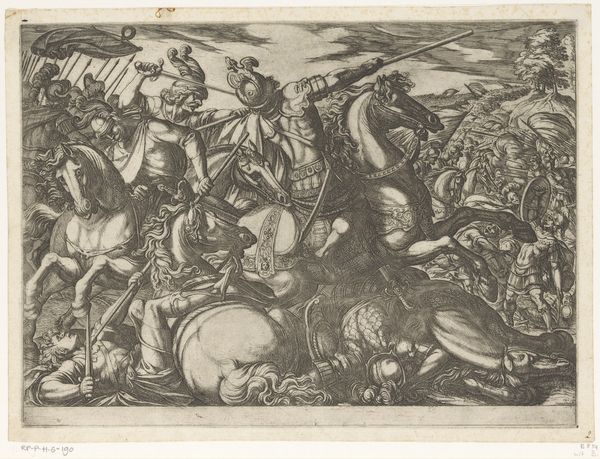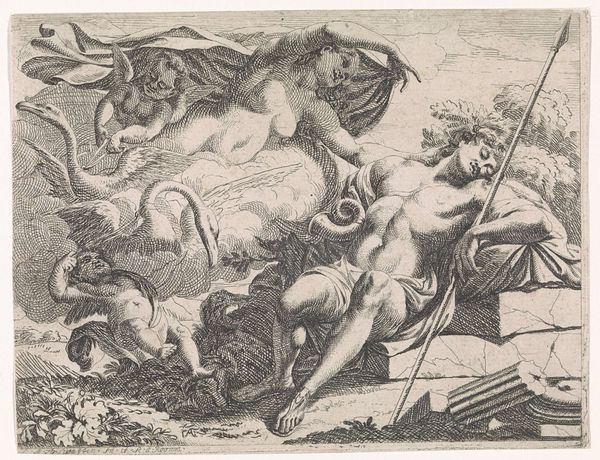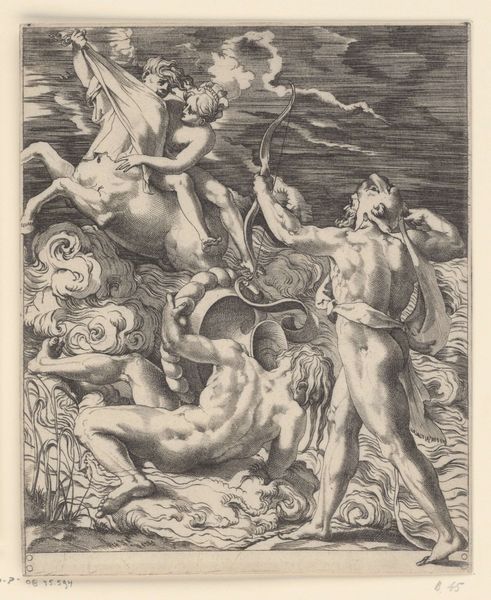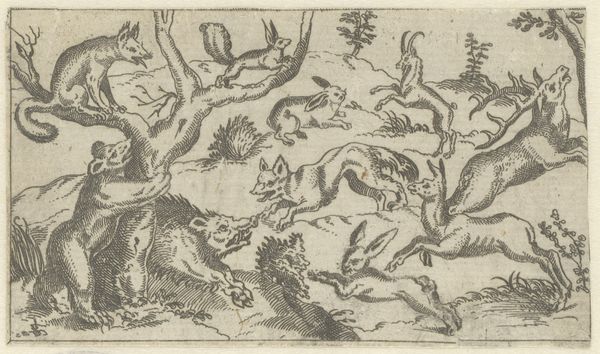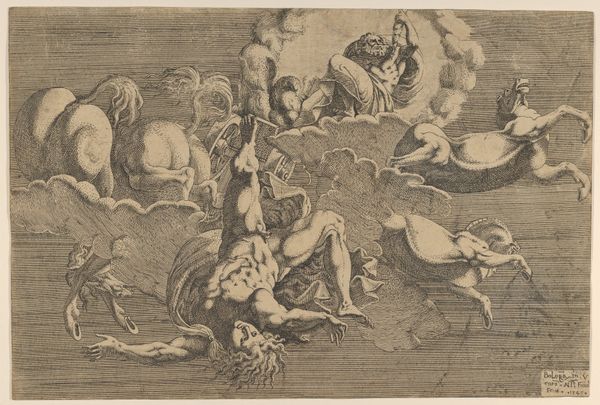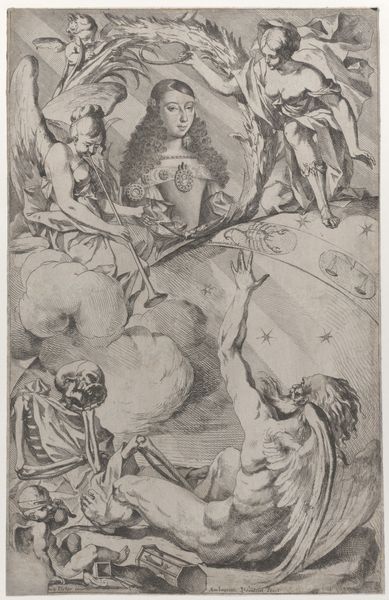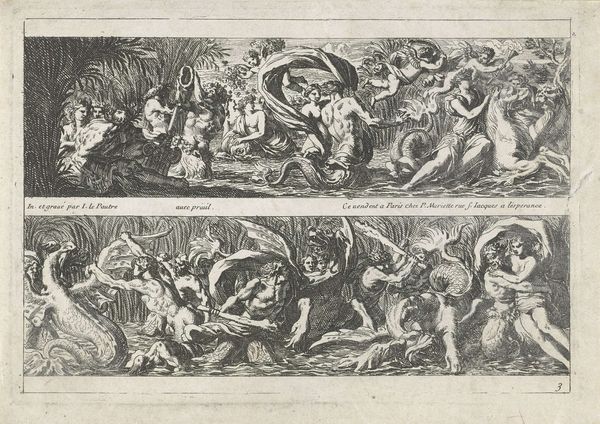
Neptune in his Chariot being drawn by seahorses, from the 'Division of the Universe' 1531 - 1576
0:00
0:00
drawing, print, engraving
#
drawing
#
ink drawing
#
allegory
# print
#
landscape
#
mannerism
#
figuration
#
ancient-mediterranean
#
engraving
Dimensions: sheet: 7 13/16 x 10 1/4 in. (19.8 x 26 cm)
Copyright: Public Domain
Giulio Bonasone made this print of Neptune in his Chariot being drawn by seahorses, from the 'Division of the Universe', sometime in the 16th century. The Italian Renaissance saw a renewed interest in classical antiquity. This image draws on the pantheon of Greco-Roman gods and goddesses to represent a cosmological theory of the natural world. The naked figure of Neptune, god of the sea, is a clear reference to classical sculpture. But it’s important to remember that this image was produced during the rise of print culture in Europe. Woodcuts and engravings made images more reproducible and more accessible to a wider audience. It would be interesting to know more about the networks in which Bonasone was working. Who was purchasing his prints? And what role did images like this play in shaping early modern science? Further research into the printmaking industry of 16th-century Italy will no doubt reveal further insights into the image's purpose. Ultimately, the meaning of art is always contingent on its social and institutional context.
Comments
No comments
Be the first to comment and join the conversation on the ultimate creative platform.
